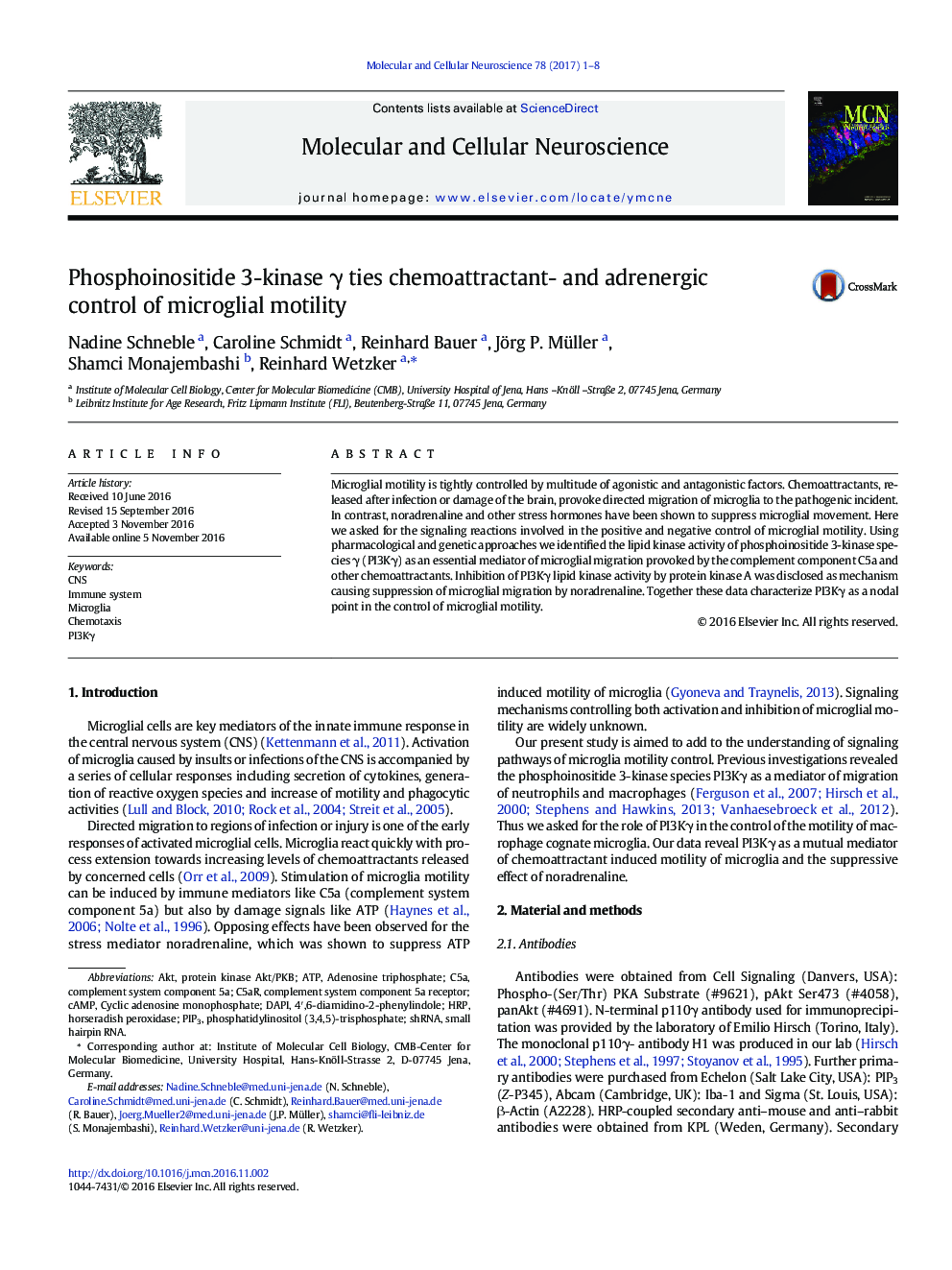| Article ID | Journal | Published Year | Pages | File Type |
|---|---|---|---|---|
| 5534442 | Molecular and Cellular Neuroscience | 2017 | 8 Pages |
â¢PI3Kγ controls microglial migration induced by C5a and other chemoattractants.â¢PI3Kγ driven microglial migration is suppressed by norepinephrine.â¢Norepinephrine blocks lipid kinase activity of PI3Kγ.
Microglial motility is tightly controlled by multitude of agonistic and antagonistic factors. Chemoattractants, released after infection or damage of the brain, provoke directed migration of microglia to the pathogenic incident. In contrast, noradrenaline and other stress hormones have been shown to suppress microglial movement. Here we asked for the signaling reactions involved in the positive and negative control of microglial motility. Using pharmacological and genetic approaches we identified the lipid kinase activity of phosphoinositide 3-kinase species γ (PI3Kγ) as an essential mediator of microglial migration provoked by the complement component C5a and other chemoattractants. Inhibition of PI3Kγ lipid kinase activity by protein kinase A was disclosed as mechanism causing suppression of microglial migration by noradrenaline. Together these data characterize PI3Kγ as a nodal point in the control of microglial motility.
Graphical abstractDownload high-res image (84KB)Download full-size image
